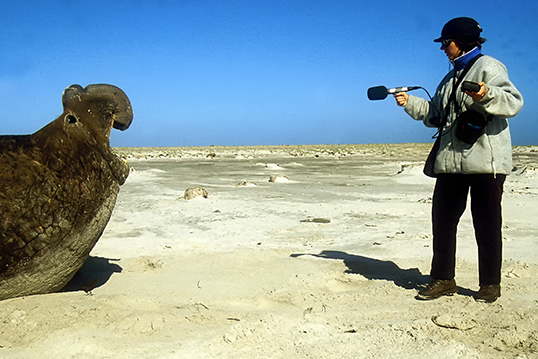Acoustic communication
Males
One of the main target of this research project is the study of male communication during agonistic interactions. Hence we have begun recording elephant seals sounds, starting with adult males and then taking records of younger males, females and pups for comparison. Due to the environmental noise caused by heavy winds we developed a recording protocol in which the people carrying on the recording is the stimulus that provoke the vocalization: this way we were able to do recordings at short distance from a large number of males.

Sound recording of an adult elephant seal male
Spectrographic analysis of sounds revealed a very constancy of vocalization of each male and a large variation between males: hence vocalizations may permit recognition between individuals, and this had preliminary confirmation from playback experiments. Acoustic parameters of sound are very well correlated with age: hence aggressive vocalizations could be used by males to gather information about the power of their contestants prior to agonistic interactions. In fact the majority of contests between males are settled by pure vocalization. The analysis of vocalizations of Sea Lion Island males revealed the presence of a small number of well defined vocalization typologies, well characterized both in the macrostructure of the waveform and in acoustic parameters of spectra and spectrograms. The comparison with recordings from the Valdes Peninsula revealed the presence of sounds peculiar to each population: as in the northern elephant seals, the variation between populations is so wide that we may talk about actual vocal dialects. Unfortunately, due to the lack of proper spectrographic material from other populations, we were unable to extend this conclusion to other populations.

